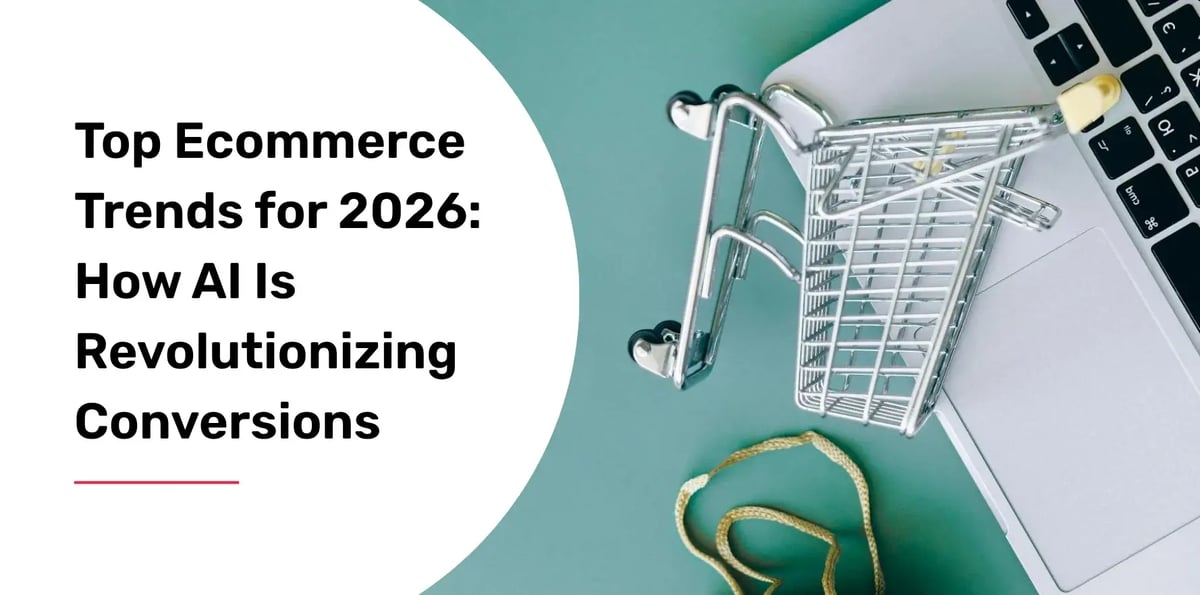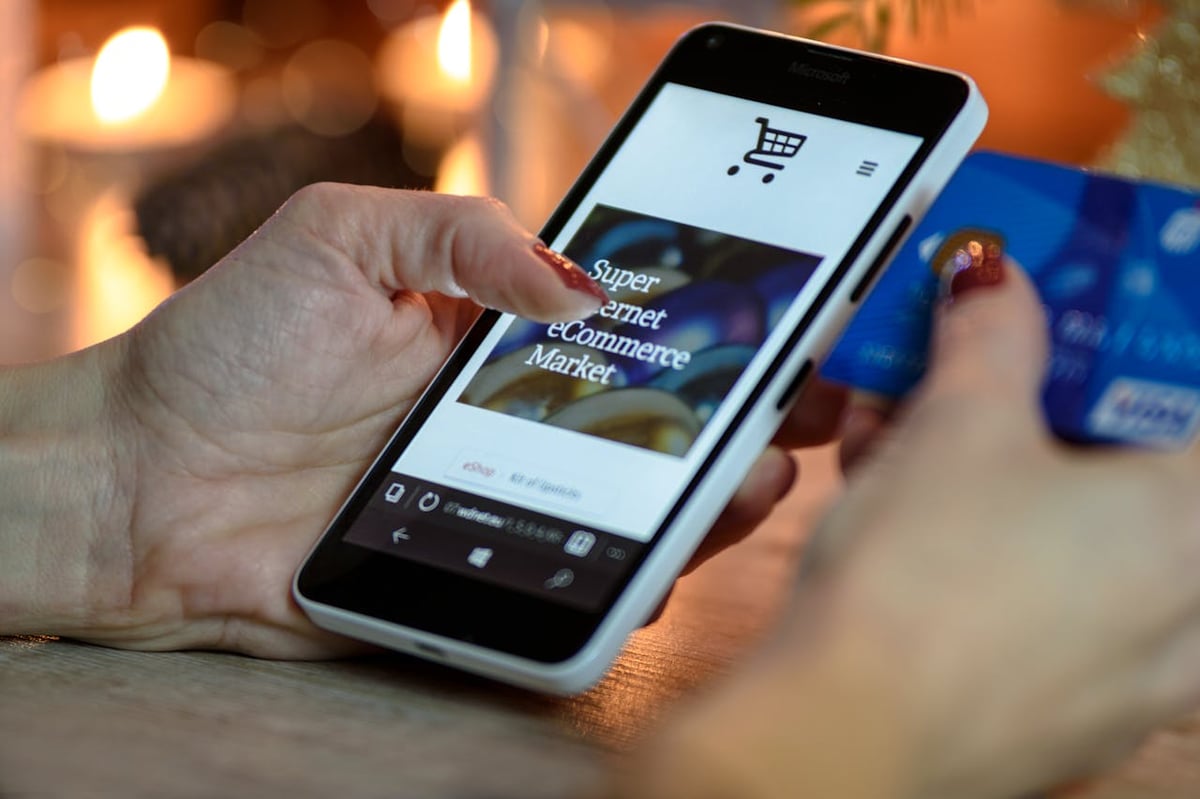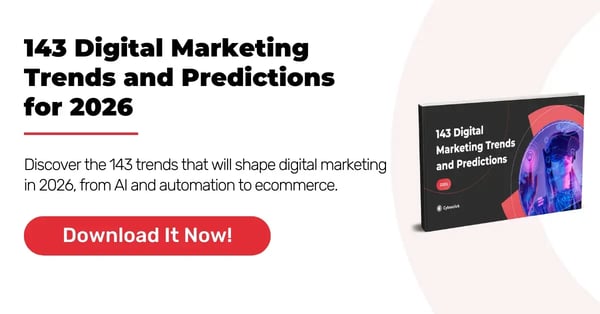Ecommerce is now in a stage where technology, data, and personalization determine a brand’s competitiveness. Today’s consumers expect a smooth, relevant, and consistent experience across every channel. Artificial intelligence (AI), automation, and integrated marketing strategies are reshaping how companies attract, convert, and retain customers.
Leading digital brands don’t just succeed because of a good product. They excel by optimizing every point of the customer journey, from the personalized recommendations to the final click at checkout. Here are the five ecommerce trends set to define the market in 2026.

Predictive Personalization with AI
The rise of generative AI and predictive data analysis is transforming personalization in ecommerce. Brands can now anticipate user needs, dynamically adjust pricing, and deliver real-time recommendations based on browsing history and behavior. Amazon is a prime example, with sections like “Frequently Bought Together” and “Related Products” generating up to 35% of its sales through automated recommendations, according to McKinsey.
This level of personalization is expanding into industries like food, fashion, and healthcare, where algorithms create more human and contextual experiences. The results include higher customer loyalty, lower acquisition costs, and a truly customer-centric strategy that turns data into tangible value.
Agentic Ecommerce: Optimized Checkout and Frictionless Experience
Checkout is one of the most critical moments in the purchase process. A clear, mobile-friendly structure can significantly reduce cart abandonment. Features like a progress bar, visible total cost, and multiple payment options—from credit cards and PayPal to Apple Pay—can boost conversion by up to 20% according to the Baymard Institute.
Leading ecommerce brands focus on a UX-first design, prioritizing simplicity, trust, and speed. In industries like retail, travel, and marketplaces, a pain-free checkout not only drives sales but also reinforces brand credibility and security.
From Traditional Ecommerce to Hybrid Marketplaces
The line between traditional ecommerce and marketplaces is blurring as large retailers adopt hybrid models. This approach combines direct sales of their own products with third-party sellers on the same platform.
The main driver is the need to expand product variety, stay competitive, and improve operational efficiency without taking on all inventory risk. While consumer perception on the matter is still evolving, these hybrid players are setting a trend that’s redefining digital commerce boundaries.

Virtual Assistants and Automated Customer Support in Ecommerce
Conversational AI is becoming an essential tool for customer service in ecommerce. Virtual assistants can manage real-time conversations, answer questions, qualify leads, and guide users toward a purchase. Voice AI agents use natural language processing (NLP) to understand tone, intent, and context, automatically prioritizing high-potential leads.
Examples like L'Oréal’s Beauty Genius show how automation can improve the experience without losing the personal touch. According to Gartner, companies using chatbots reduce support costs by up to 30% while gaining valuable insights for CRM and lead nurturing.
Allbound Strategies to Boost Conversion
The allbound model, which combines inbound and outbound tactics, is proving highly effective in ecommerce. It integrates ads, automation, value-driven content, and personalized workflows in a single flow. Using predictive lead scoring and automated workflows, teams can maintain relationships from lead capture to final sale.
In sectors like online education and retail, HubSpot claims that allbound has been shown to increase commercial efficiency by more than 40%. Its strength lies in aligning marketing and sales, turning every interaction into an opportunity for conversion and continuous learning.

Conclusion
The future of ecommerce isn’t just about implementing technology—it’s about using it to connect with people. Combining AI, automation, user-focused design, and integrated strategies is setting a new standard for the digital experience.
Brands that balance data-driven precision with empathetic communication will build the most lasting and profitable relationships. In an environment where conversion is both technical and emotional, the key is to understand that optimizing doesn’t just mean selling more but selling better.
Product Designer y CRO Strategist en Cyberclick, cuenta con una amplia trayectoria en el diseño de experiencias de usuario (UX) y en la implementación de estrategias de optimización de la tasa de conversión (CRO). Su enfoque analítico, combinado con su experiencia en diseño y desarrollo frontend, le permite ofrecer una visión integral en cada proyecto. Gracias a su habilidad para comprender a los usuarios y alinear sus necesidades con los objetivos de negocio, crea la sinergia perfecta para impulsar el crecimiento de las marcas.
Product Designer and CRO Strategist at Cyberclick, she has extensive expertise in User Experience (UX) design and the execution of Conversion Rate Optimization (CRO) strategies. Her analytical mindset, coupled with her skills in design and frontend development, enables her to provide a comprehensive perspective on each project. By deeply understanding users and aligning their needs with business goals, she fosters the perfect synergy to drive brand growth.



.png)


Leave your comment and join the conversation